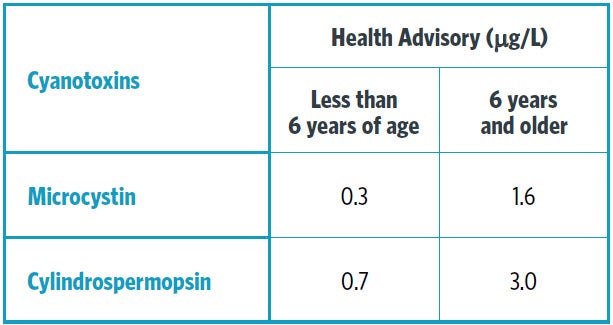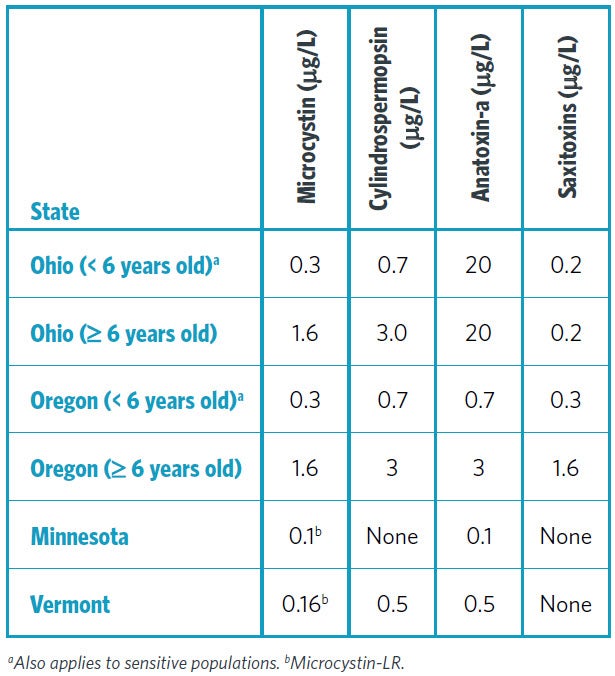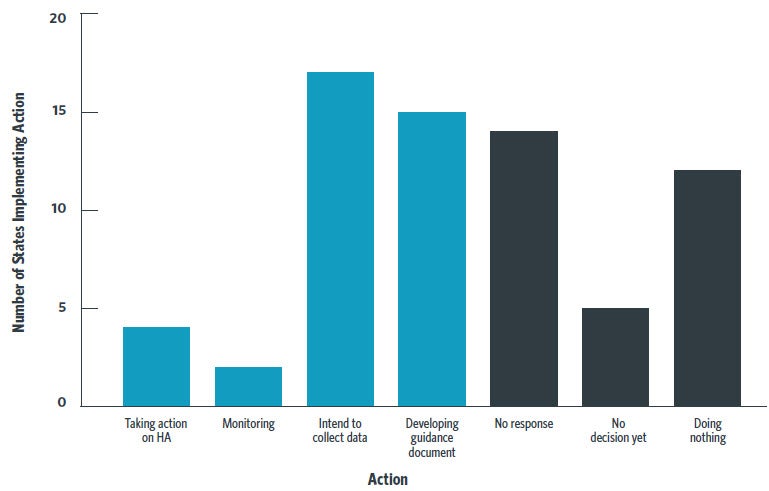
How States Have Responded to the EPA's Health Advisory Level for Cyanotoxins
Managing Toxins
In 2016, the second edition of HDR’s SDWA Newsletter discussed algal blooms and algal toxins. At that time, the U.S. Environmental Protection Agency established health advisories for two algal toxins, microcystin and cylindrospermopsin. The HAs, summarized in Table 1, had been in effect for about one year following several algal blooms that gained nationwide attention. The HAs provide guidance to regulators concerning safe levels of contaminant exposure over a period of time but are not regulated or federally enforced.
In addition to establishing HAs for microcystin and cylindrospermopsin, the EPA published documents describing the health effects of microcystin, cylindrospermopsin, and anatoxin-a, which does not have an HA due to limited toxicity data. The EPA published a management document to accompany the HAs, which provides guidance and information to water systems on how to mitigate risks from cyanotoxins in drinking water.
The following provides a review on how individual states have responded since the HAs have been released and accompanying resources have been published.

State Guidance Levels
Although not federally regulated, state primacy agencies can develop guidance levels or regulations for cyanotoxins. A few states, including Ohio, Oregon, Minnesota, and Vermont, have proactively issued statewide guidance levels or regulations for microcystin, cylindrospermopsin, and anatoxin-a presented in Table 2. Ohio and Oregon have taken thresholds further by providing guidelines to include for saxitoxin as well.

Possibly the most proactive state with respect to algal toxins is Ohio, which has been implementing thresholds to determine when a public health advisory will be issued for a detection of cyantoxins in drinking water since 2011. After the HAs were established, Ohio lowered the threshold concentration for microcystins and cylindrospermopsin to be consistent with the EPA.
Similarly, Oregon assumed responsibility in 2011 for issuing and lifting public health advisories when cyanobacterial harmful algal blooms are detected. As a result of the EPA’s HAs, Oregon updated the state-issued microcystin guidance level.
State Actions
Although certain states have been progressive and proactive toward algal toxins in drinking water, some states have not taken action as a result of the EPA’s HAs. In 2016, a survey funded by the American Water Works Association was conducted to investigate how individual states were responding to the HAs. A breakdown of responses is shown in Figure 1 — 14 states did not provide a response to the survey, 12 responded that they are not taking any action, and 5 were still developing their approach at the time of the survey. Some states are not taking action because the HAs are not actual regulations — only advisories. Other states are avoiding taking action due to legal concerns with trying to enforce a standard that is not federally regulated. The remaining 19 states are taking at least one of the four actions, and many states are taking more than one action:
- Taking action when an HA is exceeded.
- Requiring monitoring.
- Collecting data.
- Writing (or have already written) a guidance document.



